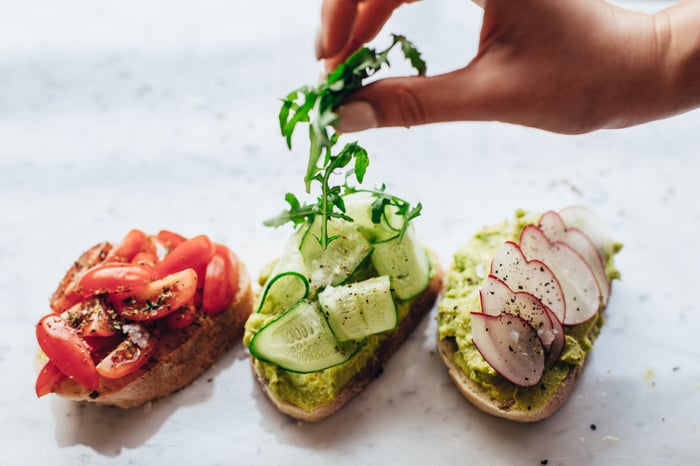
Many feel that a whole-food plant-based (WFPB) diet and the vegan diet are the same since both are plant-based. However, this isn't true. A WFPB diet focuses on whole, natural, and unprocessed foods, while a vegan diet includes everything that doesn't contain animal-derived products. So, if a vegan's daily diet consists of highly-processed food, their diet would be unhealthy as processed food tends to spike your blood sugar and hunger levels, leading you to overeat.
How does a whole-food Plant-based diet help maintain our health?

Better immune system, less inflammation
"Plants give your body what it needs to help fight off infection," says Andrea Murray, MD Anderson health education specialist. According to MD Anderson Cancer Center, some essential nutrients can only be plant-based. These essential nutrients, such as vitamins, minerals, phytochemicals, and antioxidants, help maintain our health. Day by day, these elements work to resolve inflammation in our bodies by getting rid of free radicals, neutralizing toxins from pollution, processed food, bacteria, viruses, and more. With less inflammation, there is a lower chance of inflammatory diseases such as cancer, arthritis, and heart diseases. Further research from The China Study shows that "a plant-based diet can reduce the risk of type 2 diabetes, heart disease, certain types of cancer, and other major illnesses."

Help with weight management
Being in a healthy weight range is crucial for good health. Excess weight may cause inflammation and hormonal imbalance that leads to higher risks for type 2 diabetes and 12 different types of cancer. The high fiber content from plants ease digestion and help our bodies get rid of the waste. With proper bowel management, it's easier for us to digest and absorb the nutrients from our food better. This will in turn help lower cholesterol and stabilize blood sugar in our bodies. Consider adding fiber-rich foods like artichoke, black beans, and coconuts to your diet.
Healthy Skin
As mentioned earlier, WFPB foods help regulate your blood sugar levels. As stated on the American Academy of Dermatology, blood sugar spikes cause your body to produce more sebum (an oily substance) in your skin and may induce inflammation. Both may result in acne if this occurs regularly. WFPB diet can help reduce this by regulating your blood sugar levels. Additionally, abundant antioxidants and other plant-derived nutrients from WFPB helps maintain healthy and clear skin. Antioxidants such as Vitamin E, C, and A as well as minerals such as magnesium, copper, and selenium can help repair damaged cells and improve skin elasticity. Your water intake increases on a WFPB diet (most plant foods have over 70% water content). High water intake does wonders for your body, including your skin, as it becomes less vulnerable to skin disorders and premature wrinkling.

Wellness
Certain foods cause inflammation in our bodies. Such inflammation comes with a variety of disorders and can cause feelings of anxiety, stress, and depression. The high amounts of antioxidants and phytochemicals in WFPB foods help to repair worn brain cells and reduce overall inflammation. It can help manage your emotions and promote a sense of well-being. Some plant-based foods can act as effective natural antidepressants as they contain a phytochemical called quercetin that can only be found in plant-based foods. Quercetin increases the production of "happy chemicals" serotonin, dopamine, and norepinephrine in the brain. Some good sources are apples, kale, berries, grapes, onion, and green tea.

How do I start?
Try these 5 simple ways to start your WFPB diet:
1. Try having a plant-based meal once a day like Oprah Winfrey
2. Eat fruits or nuts for dessert and snacks
3. Substitute any refined and processed food products with natural products
4. Eat more vegetables when you get the chance
5. Drink more water instead of sugary drinks
How to make a healthy WFPB meal?
1. Use raw and organic whole foods
2. Avoid oil, added sugar, and any refined foods
3. Be mindful of the portion and amount










